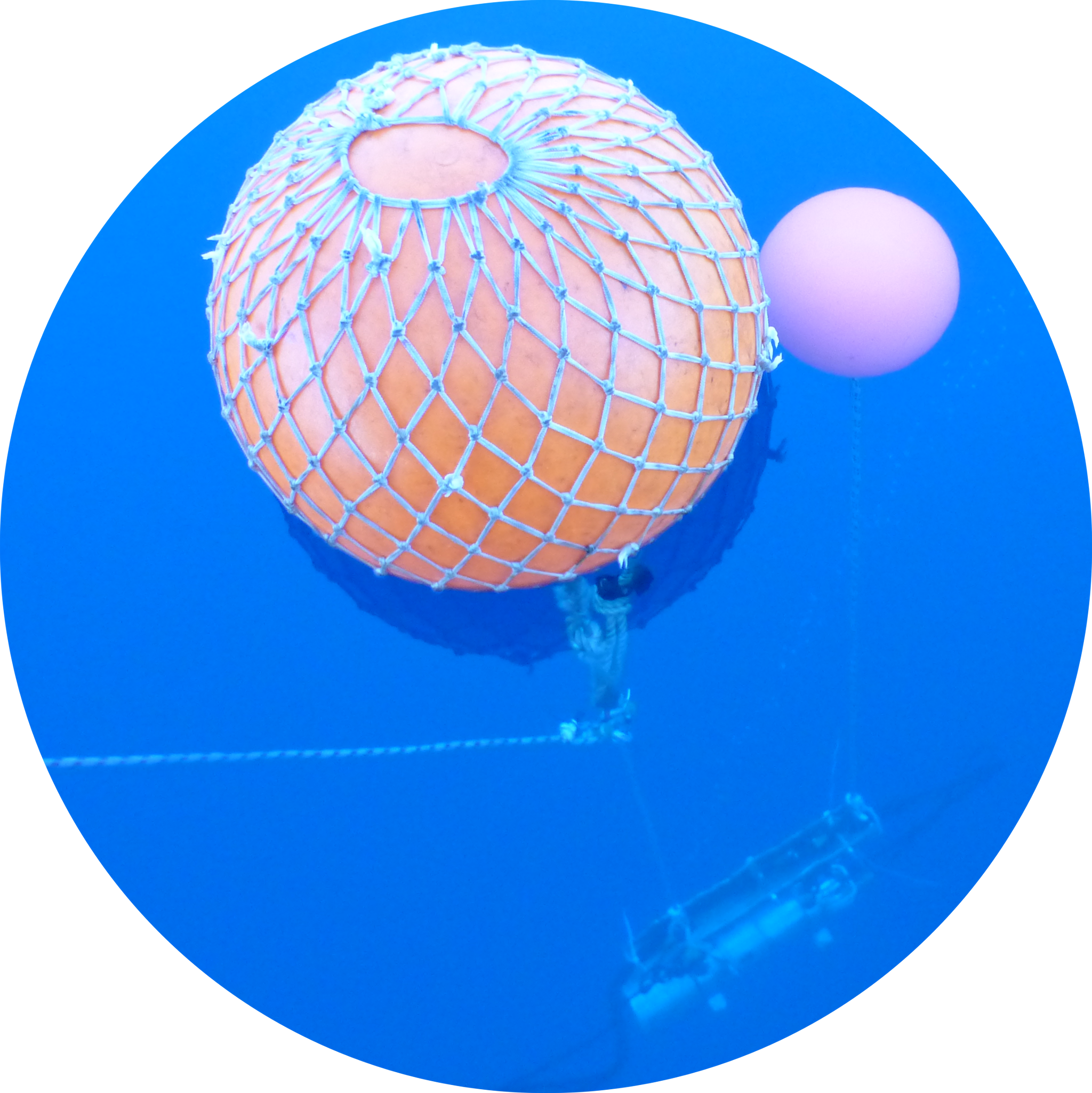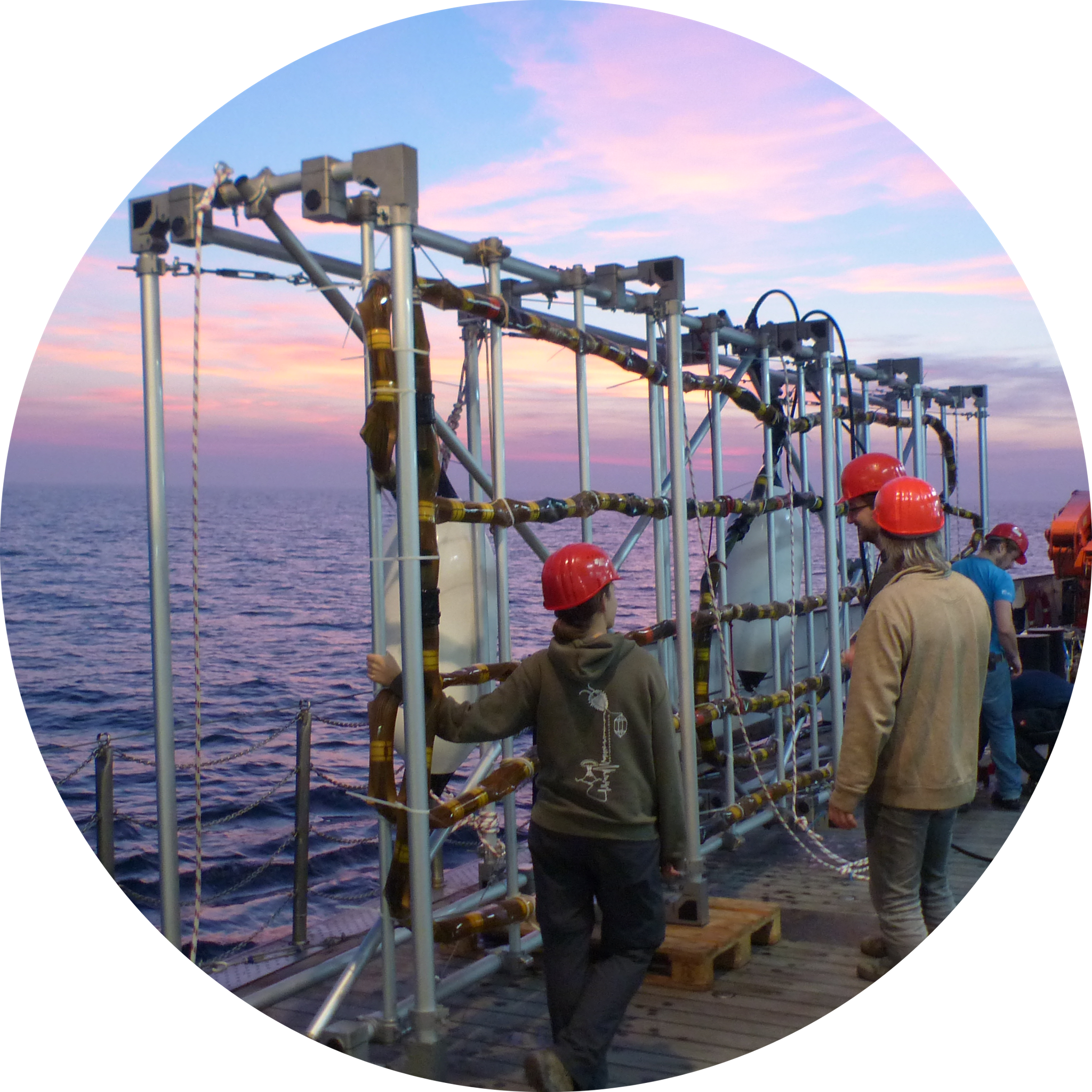Cool Tools
 Since the 1990's we've tried to push the development of modern instruments and approaches. Modern tools are not just instruments and hardware, but to a large extent also software. And for academia, it is not enough to purchase equipment, ususally we want much more!
Since the 1990's we've tried to push the development of modern instruments and approaches. Modern tools are not just instruments and hardware, but to a large extent also software. And for academia, it is not enough to purchase equipment, ususally we want much more!
Echosounders
In the 1980's, acoustic data were not recorded digitally, but rather on paper, using relatively expensive recorders and paper. Certain deficits existed, namely the limited lifetime of paper/grey intensity and that it was very difficult to deal with the high dynamic range e.g. between a strong seafloor reflection and very weak internal reflectors. Adjusting the gain of recorders continuously might improve the paper images, but then comparisons become almost impossible.
It is the benefit of digital data that amplitudes are preserved, but subsequent processing allows to study all aspects of a data set, and choice of display settings can enhance certain aspects.
In the 1990's we have particularly contributed to the world of sediment echosounders, namely a parametric system called PARASOUND. Developing a digital acquisition system such as the ParaDigMA system was just timely, because 1) computer based on Microsoft DOS systems became affordable and did guarantee a long term return of software  development investment, and 2) hardware for digitization of signals in the range of several kHz to 50 kHz became technically feasable and affordable. Since then globally hundreds of German expeditions have been recorded by ParaDigMA and its successor ParaStore (by Atlas Hydrographics) and can be used for research. A huge volume of these data of >100'000 km profiles are archived and maintained in our SESAM database.
development investment, and 2) hardware for digitization of signals in the range of several kHz to 50 kHz became technically feasable and affordable. Since then globally hundreds of German expeditions have been recorded by ParaDigMA and its successor ParaStore (by Atlas Hydrographics) and can be used for research. A huge volume of these data of >100'000 km profiles are archived and maintained in our SESAM database.
Seismic
When we entered in 1995 the field of seismic acquisition, the available instruments was dominated by the the appllications for hydrocarbon exploration, where low frequencies were generated and money was not an issue. Acquisition system were mostly completely proprietary, systemss based on the PC world were not developend.
The company Bison, however, decided to build a new seismic acquisition system on a PC with a Windows NT software, the first multitasking operating system, which supported a kind of realtime acquisition. The 48-channel seismograph Spectra allowed 20 kHz sampling rate (1996) and was therefore suitable to enter the world of high-resolution seismics without being limited by the commercial world of low frequency hydrocarbon exploration. Because the new Syntron streamer system, funded by university, SFB 261 and BMBF, comprised 96 channels, a second seismographi, Bison Jupiter, was purchased in 1999 for a full recording. Data were then stored on DLT, which allowed 20 GB per tape, and therefore superior to 9-track magnetic tapes, which had been used for commercial storage and ParaDigMA storage, at maximum 150 MB. Costs could be significantly reduced towards an affordable level for universities.
But the major step forward was reached with the custom-made MaMuCS software (Hanno Keil) in 2006, which made us independant from the constantly changing market (Bison and Syntron were liquidated by competitors). And the software could be constantly adjusted to the advancing software and hardware world and necessary improvement could be implemented timely. Data could now be stored on hard disks, which prices were gradually dropping. Reliability is extremely high and superior to most other acquisition systems known to us.
With a slightly different hardware configuration, we could design a laptop based 80-channel acqusition system, which is easy to operate on small vessels as e.g. for lake surveys.
Sensors and Targets
With sound or light, rays of ways are important. They are traveling through media like air, water soil or rock. At interfaces they may be refracted or reflected, partially or completely. From optics we know that focusing as in lenses helps to enhance distant objects or wide-angle view give the full picture. What lenses are for optics, antennas, transducers or streamers fulfil the same purpose for electromagnetic or sound waves. Directivity, which depends on the dimensions of the sensor and the recorded frequencies, plays a crucial role for the spatial resolution.
The typical recorder is a seismic streamer, where hydrophones are lined up in a flexible tube, filled with fluid, gel or solid foam. Assembling several hydrophones into a group, improves the directivity for upward moving waves, but waves at higher angles are suppressed. For deeper imaging, the focusing may be advantageous, but in shallow water, also reflections at higher angles must be properly recorded.
While commercial streamers had 6.25 m long groups or longer ones, we decided to optimize recording for shallow water by purchasing a long streamer with programmable group lengths (Syntron, 0.5-6.25 m, 1996) and later a shorter 50 m long streamer with just a single hydrophone for each group (Arstech, 1 m. 2003). Together with higher shot rates, which become possible in shallow water and also with in improving performance of storage media from tape to disk, the data density, fold and noise suppression could compensate the reduction of hydrophone per group, which were mainly suppress horiontally travelling waves and noise.
Software
ParaDigMA was developed between 1989 and 1992 and comprised at that time an advanced system of hardware with a 100 kHZ A/D converter, a multiplexer for parallel recording of multiple channels, a realtime operating system and a powerful PC, which receives the data via cable and stores it on magnetic tape (9-track) or hard disks. The software was written in FORTRAN and Assembler and had more than 100'000 lines of code. It allowed real-time process such as filtering, FFT, and other advanced methods, it converted data for a color-display on screen (at these time 640x49 px resolution) and a printer and it provided metadata such as navigation, instrumant status etc.
At its time, the system was the most advanced acquisition system for sediment echosounder data worldwide!
MaMuCS is an acquisition package, which represented the next generation for software and hardware combinations to acquire seismic data. Because of a lack of appropriate systems on the market, we decided to produce a custom software. It was coded in C++ and this time the realtime software was running on the same PC as the display and storage package. Using a National Instruments Interface and libraries for A/D conversion and multiplexing, up to 10 kHz sampling frequency could be achieved for a total of 96 channels, for a single channel up to 100 kHz.
Streamer directivity
single hydrophones (spherical, cylindircal) vs groups
Channel vs. Offset limitations
varying offset
Frame
Beamforming
